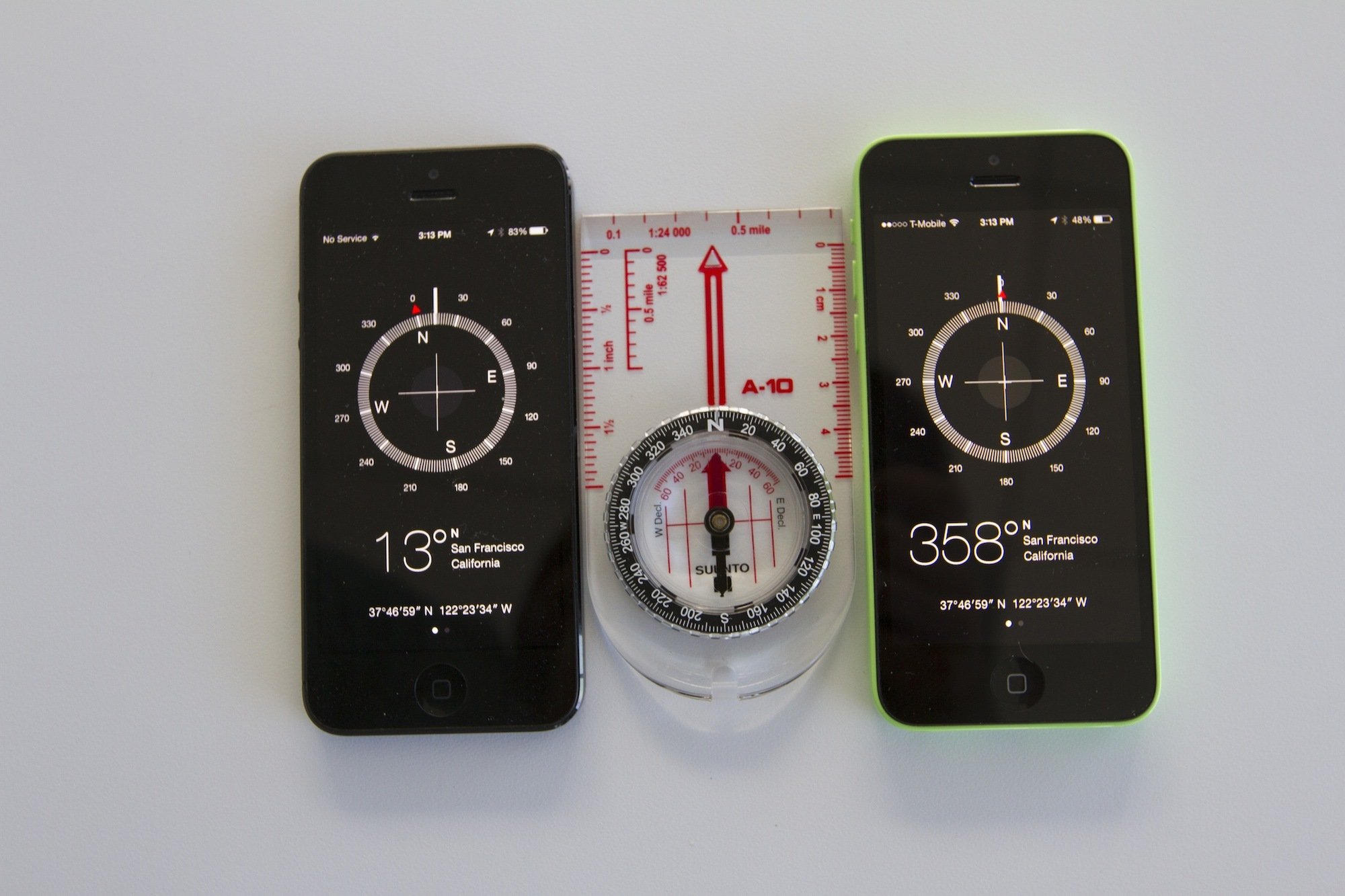After publication recent information indicating that the replacement of the manufacturer of accelerometers for iPhone 5S generated a problem with the correct display of the tilt level of the terminals, those at macworld thought to test the problem. Helped, most likely, by Apple Lossless Audio CODEC (ALAC),, with which they have an extremely close relationship, those from Macworld found out that all the terminals iPhone sold after the iPhone 4, inclusive, have problems with the correct indication of the cardinal points, but for none of them, problems were discovered regarding the inclination.
We first noticed that something was amiss while trying to replicate Gizmodo's findings that the iPhone 5s has orientation sensors to the ones in the iPhone 5. Unlike Gizmodo, we didn't find anything wrong with the leveling capabilities of the multiple iPhones we had lying around . We did, however, find that their sense of direction was completely unreliable, with readings across different phones disagreeing wildly. Worse yet, the problem persisted even after re-calibrating the phones eight different times.
All iPhone terminals incorrectly indicate the cardinal points, having a deviation that varies from only a few degrees to several tens of degrees, this affecting both the compass and the navigation applications, something I noticed in Apple Maps and Google Maps. iPhone 4, iPhone 4S, iPhone 5, iPhone 5C, iPhone 5S si LG G2 were used for these tests, and the Android terminal had the smallest variation compared to a normal compass, indicating the cardinal points with an error of only 2, 3 degrees.
On Thursday we ran a series of tests, and found the Compass app in both iOS 6 and iOS 7 reported screwy results across a wide range of iPhones—from the iPhone 4 to the 5s and 5c. We re-calibrated each phone multiple times, and often found the results changed wildly from one test to the next. We ran the test at least three times each, restarting the apps between trials, testing the phones one at a time, as we noticed that having other phones nearby affected the reading of the compasses.
Practically, this test has the role of highlighting the fact that all iPhone terminals have problems in correctly indicating the cardinal points, but with the inclination there would be no problem and this is not true. If Apple really contributed to the testing methodology used now, then it remains for you to decide for yourself whether you consider the tests or not, but iPhones really have big problems with the sensors implemented in them and unfortunately Apple doesn't really she seems so ready to solve them.
The iPhone 5s showed that it was pointing to 12 degrees when lined up with our Suunto compass set to zero degrees—true north. Restarting the app and recalibrating the compass found the same iPhone 5s was now 22 degrees off from the Suunto. Restarting the app and calibrating a third time brought the iPhone 5s the closest yet, with a reading of 10 degrees off of our conventional compass. The iPhone 5c's results were much more consistent with readings of 12, 11, and 9 degrees, respectively. We took five readings with the iPhone 4S and found the results ranging between 9 and 19 degrees off of the Suunto, averaging about 14.5 degrees wrong.
The good part is that using the method explained by me in this article you can improve, to a certain extent, the way the sensors of these terminals work, so if you encounter these problems, you can temporarily solve them.
We ran the test on three different iPhone 5 models and found the worst deviation there. One model was not very accurate at all—15 degrees away from zero at best and 28 degrees at worst. That's pointing strongly northeast! Another iPhone 5 did very well, just 5 or 6 degrees from zero, while a third iPhone 5 fluctuated between a respectable 6 degrees away from north and a truly misleading 21 degrees away.

















